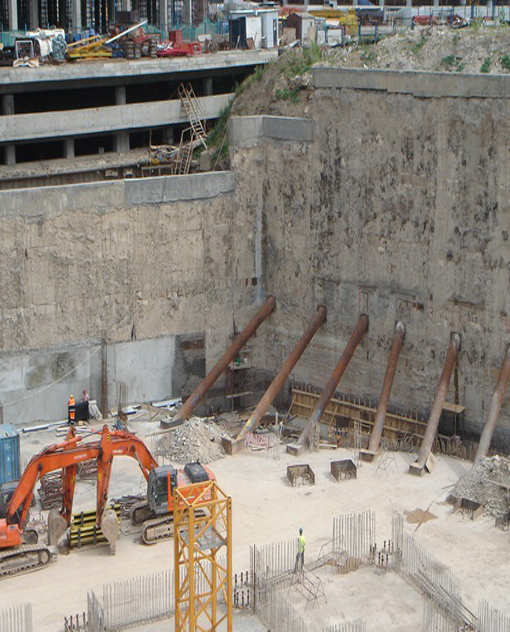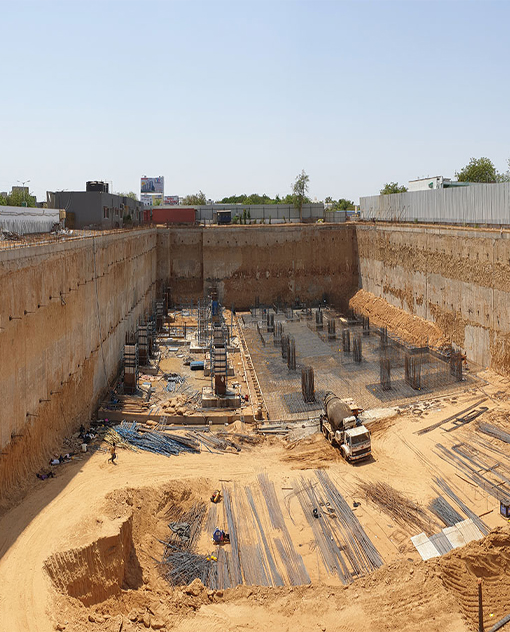Our Product Descriptions
Diaphragm wall piling, also known as slurry wall construction, is a technique used for creating underground retaining walls.
Diaphragm wall piling, also known as slurry wall construction, is a technique used for creating underground retaining walls that are typically used to support deep excavations, such as those required for basements, underground parking structures, or subway stations. Here's a detailed overview of the process:
Diaphragm wall piling offers several advantages, including high structural integrity, minimal disruption to adjacent structures, and the ability to withstand high lateral loads. It is a widely used technique in urban construction projects where space is limited and where deep excavations are required.
Here's a breakdown of the process
- Preparation : The site is surveyed and marked for the location and dimensions of the diaphragm wall. Access routes and space for equipment are established.
- Slurry Installation : As the trench is excavated, a stabilizing slurry (usually a mixture of bentonite and water) is continuously pumped into the trench to prevent collapse and stabilize the surrounding soil. This slurry also helps to maintain the stability of the excavation and acts as a support fluid for the subsequent steps.
- Reinforcement Installation : Steel reinforcement cages or bars are lowered into the slurry-filled trench. These reinforcements provide structural strength to the diaphragm wall and are typically designed based on the anticipated loads and soil conditions.
- Concrete Placement : Once the reinforcement is in place, concrete is poured into the trench. The concrete displaces the slurry, gradually filling the trench from the bottom up. This displacement process ensures that the slurry is effectively removed from within the wall, leaving behind a solid concrete structure.
- Panel Construction : The diaphragm wall is constructed in individual panels, typically ranging from 1 to 3 meters in width. As each panel is completed, the process is repeated adjacent to the previous panel until the full length of the wall is constructed.
- Trimming and Finishing : After the concrete has cured sufficiently, any excess concrete is trimmed from the top of the wall to achieve the desired height and alignment. The surface of the wall may also be smoothed or finished as required.
- Quality Control and Testing : Throughout the construction process, quality control measures are implemented to ensure that the diaphragm wall meets the specified design requirements. This may include testing for strength, integrity, and alignment.

